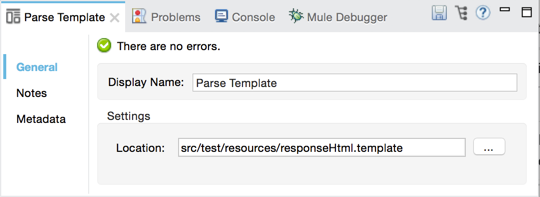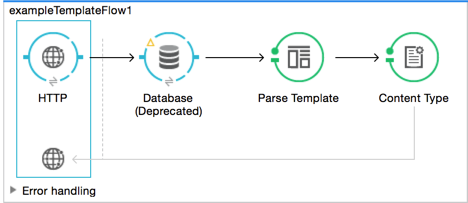Studio Visual Editor
Drag a parse template message processor from the palette onto the canvas, then configure the fields according to the table below.

| Field | Value | Description |
|---|---|---|
Display Name |
Parse Template |
Customize to display a unique name for the transformer in your application. |
Location |
filepath |
Define the location of the file that Mule uses as a template into which to insert values extracted from the message properties or variables. |
XML Editor or Standalone
Add a parse-template element to your flow, then configure according to the tables below.
<parse-template location="users/administrator/desktop/hrweb/confirmation.html" doc:name="Parse Template"/>Attributes of the parse-template element:
| Element Attributes | Value |
|---|---|
|
Filepath which defines the location of the file that Mule uses as a template into which to insert values extracted from the message properties or variables. |
|
Customize to display a unique name for the transformer in your application. (Note: Not needed in Mule standalone.) |




